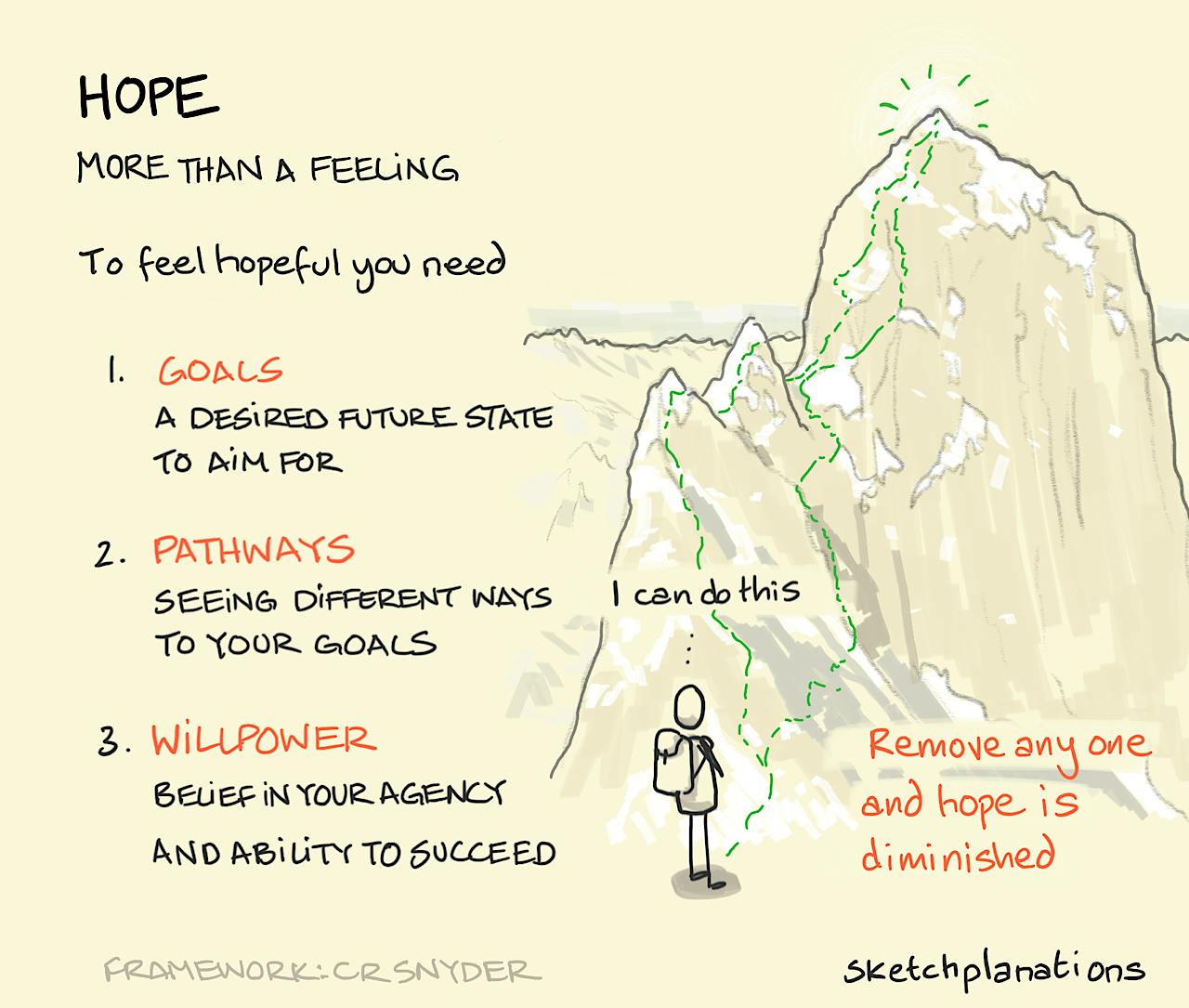Hope: A Cognitive Model for Hope

- Prints
- Copied!
👇 Get new sketches each week
I hadn’t given much thought to hope, beyond it being a nice feeling to have, until I heard of CR Snyder's cognitive model for hope. Snyder's model shed a new light on hope for me, explaining that to feel hopeful requires three key components.
What is Hope?
According to CR Snyder's cognitive model of hope (paraphrasing) an individual may be hopeful if they have:
- Goals they desire.
If you don’t or can’t picture any future state you’d like, then you won’t have a lot of hope. - Pathways.
You need to see some ways that you may make step-by-step progress towards a goal. - Willpower or agency.
You need to be motivated and believe that you have the ability to succeed at your goal.
With all of these, you can imagine feeling hopeful. Without any one of them and you probably won’t so much.
GK Chesterton, never one to miss a witty line, gave quite a different take:
Hope is the power of being cheerful in circumstances that we know to be desperate.
— GK Chesterton
Chesterton's tongue-in-cheek hope is fun, but without goals, pathways or willpower, it's not really hope as Snyder would see it.
This sketch features in my book Big Ideas Little Pictures
More
The mountain is the Ogre, a wholly impossible-looking peak scaled by Doug Scott and others, for which I would have had zero hope to climb (no pathways, no willpower), and yet they remarkably did.
I learned about Snyder's model of hope in Brené Brown's Dare to Lead .
Related Ideas to Hope Theory
Also see:
- Pillars of Hope
- Autonomy, Mastery, Purpose
- Flow
- Languishing
- Joy: the most vulnerable emotion
- Optimism Bias
- Discovering Truth and Beauty and Sharing it with Others
- Vorfreude: "before happiness"
- 5 Ways to Wellbeing
- How to Instantly Feel Better

